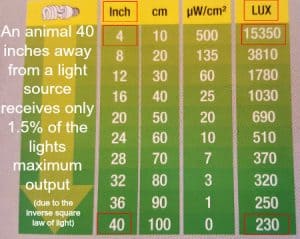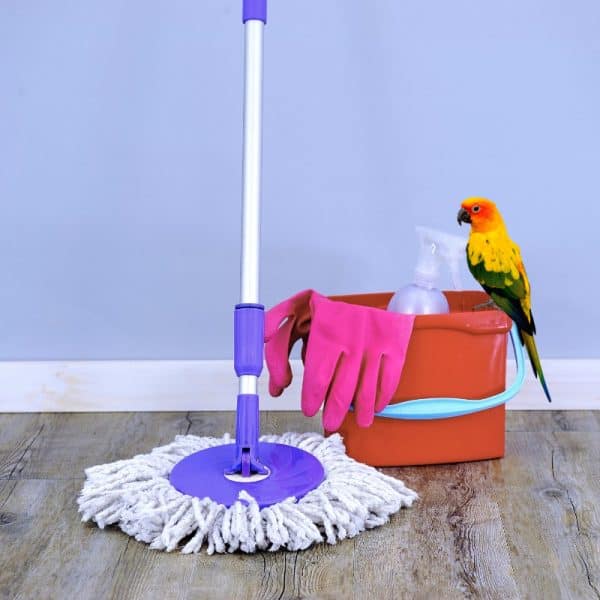
What are the CRI, UVA & UVB of our Full Spectrum Bird Cage Bulb?
Last Updated on by Mitch Rezman
We get this question a lot so I wrote a blog post about it found here. Although the post talks about another one of our lamps the answers are the same when referring to Bird Cage Light Bulb Full Spectrum 25 Watt Daylight found here.
But I’m glad the question came up again because I’ve been meaning to add a caveat to the discussion. Because I’m an old guy I learned photography in the sixties. Way before digital I had to know how to coordinate the aperture (f-stop) with the shutter speed of the camera to capture the appropriate amount of light necessary for a properly exposed image captured on film.
That said one of the things that haven’t changed even digital and that’s the properties of light.
All of photography to this very day is based on something called the “inverse square law of light” Simply Stated if a light source has “X” output (lumens, CRI, UVB) shining on an object 2 feet away from the light source, if the object’s distance from the light source is doubled to 4 feet, the light striking the object will be 1/4 intense. If you move the object to 8 feet away, once again doubling the distance, the light will be 1/16th as intense as it was when the object was 2 feet away.

Sorry to have to take you around the block with this but in the real world, if you place a full spectrum light bulb in a fixture 2 feet over a large play top birdcage and the bird is on the play top, the bird will get “X” benefit from any light bulb in the light fixture. If the bird decides to go into his cage for a snack and ends up playing with some bird toys, the birds will be 2 – 3 feet lower in the cage meaning whatever benefits a “full spectrum” may impart on the bird, they just got reduced by 75% because of the bird’s new distance from the light source.
So unless you want to put a chaise lounge on top of the cage for your parrot to spend the day sunbathing for several hours the value of an expensive (with CRI’s and UVB’s) full spectrum birdcage bulb diminishes by 75% as soon as your bird moves a couple of feet away.
BTW – we place no emphasis on CRI because a CRI of 100 will impact your bird the same as a bulb having a CRI of 50. A higher CRI will not help your bird assimilate vitamins any better.
Per Wikipedia:
The CRI of a light source does not indicate the apparent color of the light source; that information is under the rubric of the correlated color temperature (CCT).CRI’s ability to predict color appearance has been criticized in favor of measures based on color appearance models, such as CIECAM02 and, for daylight simulators, the CIE Metamerism Index. CRI is not a good indicator for use in visual assessment, especially for sources below 5000 kelvin (K
A newer version of the CRI, R96a, has been developed, but it has not replaced the better-known Ra general color rendering index.
Let me know if you have further questions
MitchR
Windy City Parrot, CMO
Author Profile
Latest entries
 The Traveling BirdJune 26, 2025Can You Name 5 Parrot Species That Are Living Wild in the USA?
The Traveling BirdJune 26, 2025Can You Name 5 Parrot Species That Are Living Wild in the USA? Bird BehaviorJune 26, 2025How is it Parrots Are Problem Solvers Social Animals and Even Use Tools?
Bird BehaviorJune 26, 2025How is it Parrots Are Problem Solvers Social Animals and Even Use Tools? Bird & Parrot AnatomyJune 25, 2025How a Tiny Chemical Modification Makes Parrots Nature’s Living Paintings
Bird & Parrot AnatomyJune 25, 2025How a Tiny Chemical Modification Makes Parrots Nature’s Living Paintings PigeonsJune 20, 2025How Do Parrots Thrive in Cities Outside Their Native Habitats?
PigeonsJune 20, 2025How Do Parrots Thrive in Cities Outside Their Native Habitats?


